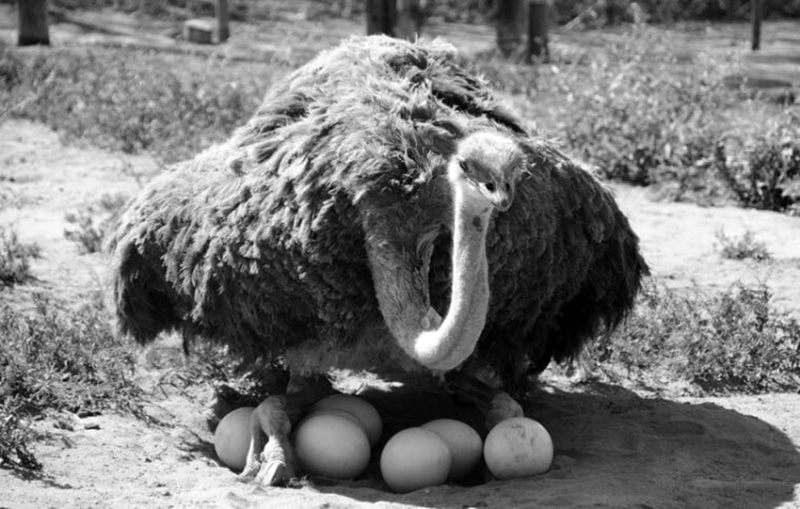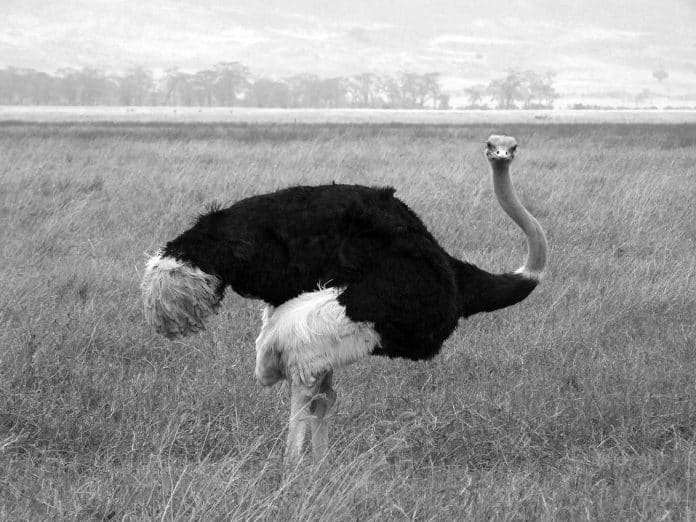Tanzania’s Ostriches: A Closer Look at the Feathered Giants of the Savannah
Tanzania, a land known for its diverse wildlife, is home to some of the most magnificent creatures on Earth. While Tanzania is renowned for its lions, elephants, and zebras, one species that often goes unnoticed is the ostrich. Found in the vast savannahs and grasslands, Tanzania’s ostriches are truly remarkable creatures. In this article, we will take a closer look at these feathered giants and explore their habitat, behavior, and unique adaptations.
The habitat and behavior of Tanzania’s ostriches
Ostriches of Tanzania thrive in the vast open plains of the savannah. These birds prefer dry and arid environments, making the country’s grasslands an ideal habitat. With their long legs and powerful wings, ostriches can cover great distances while foraging for food. They are highly adaptable and can survive in both hot and cold climates.
Ostriches are social birds and live in small groups known as flocks. Within these flocks, there is a hierarchical structure, with dominant males leading the group. They communicate through a range of vocalizations, from booming calls to hissing sounds. During mating season, male ostriches perform elaborate displays to attract females. They engage in courtship dances that involve flapping their wings, erecting their feathers, and bobbing their heads.
Physical characteristics and adaptations of Tanzania’s ostriches
Tanzania’s ostriches are the largest birds on Earth, with males reaching up to 9 feet tall and weighing up to 300 pounds. They have long, powerful legs that enable them to run at incredible speeds of up to 60 miles per hour. Their wings, although not designed for flight, help them maintain balance and change direction while running.
One of the most unique adaptations of ostriches is their feather coloration. The males have striking black and white plumage, while the females are more drab in color. This difference in appearance helps them blend into their surroundings and provides camouflage during nesting. Ostriches also have large, expressive eyes that allow them to spot predators from a distance.
The role of Tanzania’s ostriches in the ecosystem
Tanzania’s ostriches play a vital role in the ecosystem as both predators and prey. As omnivores, they have a diverse diet that includes plants, seeds, insects, and small vertebrates. By consuming a variety of foods, they contribute to seed dispersal and help maintain the balance of plant populations.
Additionally, ostriches are responsible for creating water holes in the ground with their strong beaks. These holes not only serve as watering spots for other animals but also provide a habitat for smaller organisms. In turn, this attracts a range of species, promoting biodiversity in the savannah.
Conservation efforts for Tanzania’s ostriches

Despite their importance in the ecosystem, Tanzania’s ostriches face several threats to their survival. Habitat loss due to human activities, such as agriculture and infrastructure development, poses a significant risk to their populations. Additionally, poaching for their feathers, eggs, and meat further endangers these magnificent birds.
To protect Tanzania’s ostriches, conservation organizations are working tirelessly to establish protected areas and raise awareness about their conservation status. These efforts involve community engagement, education programs, and sustainable tourism initiatives. By supporting these initiatives, we can ensure the long-term survival of Tanzania’s ostriches and preserve their unique place in the country’s biodiversity.
Ostrich farming in Tanzania
In recent years, ostrich farming has gained popularity in Tanzania. This industry not only provides economic opportunities for local communities but also contributes to ostrich conservation. Farms breed ostriches for their feathers, leather, and meat, while ensuring the welfare and sustainability of the birds.
Ostrich farming practices in Tanzania emphasize ethical treatment, spacious enclosures, and a balanced diet for the birds. By promoting responsible farming, the industry aims to reduce the demand for wild-caught ostriches and their products. This sustainable approach benefits both the local economy and the long-term conservation of these magnificent creatures.
The cultural significance of Tanzania’s ostriches
In Tanzanian culture, ostriches hold a special place. Their feathers are often used in traditional ceremonies and rituals as symbols of prestige and beauty. Ostrich eggshells are intricately carved and used to create decorative crafts and jewelry. The sight of an ostrich is believed to bring good luck and prosperity to the community.
Furthermore, ostriches have become icons of Tanzanian tourism. Their majestic presence in the savannah attracts visitors from around the world, who come to witness these magnificent creatures in their natural habitat. Through tourism, local communities can benefit economically while valuing the conservation of ostriches and their ecosystems.
Interesting facts about Tanzania’s ostriches
- Ostriches have the largest eggs of any bird species, weighing around 3 pounds each.
- They have the ability to kick with incredible force, which can be fatal to predators such as lions.
- Ostriches have a unique defense mechanism known as “playing dead.” When threatened, they lie flat on the ground and remain completely still, blending in with the surroundings.
- The ostrich’s eyes are larger than its brain, making it one of the few animals with this anatomical feature.
Ostrich watching and safari tours in Tanzania
For wildlife enthusiasts and nature lovers, Tanzania offers incredible opportunities to observe ostriches in their natural habitat. Safari tours in national parks such as Serengeti, Tarangire, and Ngorongoro Conservation Area provide the chance to witness these magnificent birds up close. Knowledgeable guides lead visitors on thrilling game drives, where they can spot ostriches alongside other iconic African wildlife.
Ostrich watching is a unique experience that allows visitors to appreciate the beauty and grace of these feathered giants. Their distinctive appearance and fascinating behavior make them a highlight of any safari adventure in Tanzania.
Conclusion: Appreciating the beauty and importance of Tanzania’s ostriches
Tanzania’s ostriches are not simply feathered giants roaming the savannah; they are vital members of the country’s rich biodiversity. Through their unique adaptations, behavior, and ecological role, these magnificent birds contribute to the balance and beauty of the Tanzanian ecosystem.
By understanding and appreciating the significance of Tanzania’s ostriches, we can work towards their conservation and sustainable management. Let us cherish their presence in the savannah, support responsible tourism, and ensure a future where these feathered giants continue to captivate us with their majestic presence.
For more articles related to Wildlife in Tanzania (Animals), click here!


































